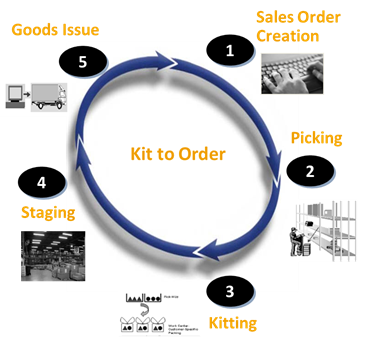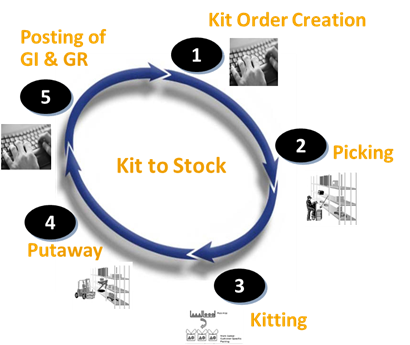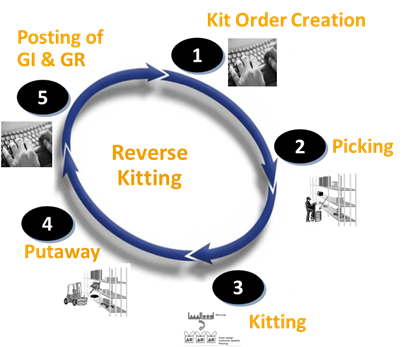SAP EWM covers the Kitting and assembly of warehouse items extensively. In warehouse management Kitting is the process of building kit products by assembling kit component materials including raw, semi-finished and finished products.
Key Business Benefits of Kitting
- Establish a process by providing the operator with required information to build a kit
- Eliminates dependency operators on time and effort consuming paper processes
Easy tracking of status, cost and effort in kitting operation despite the massive volumes of kitting process
Master data for Kitting Process
- Maintain Bill of Materials (BOM) for Kits
- Define packing specifications
- Set-up work centers
Types of Kitting Processes Supported By EWM
Kit to Order
Steps:
- Automatic creation of outbound delivery order in EWM from sales order
- Automatic creation of kit order
- Picking and staging of kit products
- Building of kit in work center as per kit order
- Moving final kit product to staging area
- Posting goods issue

Advantages
- Reduce inventory cost by storing kit component and assembled kits just before delivery
- Respond quickly and economically to increased retailer demand for custom kits
Steps:
- Create kit order for kitting
- Automatic creation of outbound delivery
- Order for picking kit components
- Automatic creation of inbound delivery to put away the final kit product
- Picking kit components in RF
- Assemble kit as per kit order
- Put away the kit into stock in RF
- Posting for goods issue for kit parts and goods receipt for final kit

Advantages
- Faster customer order fulfillment possible for the subsequent orders
- Quick and economical response to increased customer demand for custom kits
Steps:
- Create kit order for reverse kitting
- Automatic creation of outbound delivery order for picking kit product
- Automatic creation of inbound delivery to put away the components
- Picking kit product
- Disassembling kit product using kit order
- Put away the kit product into warehouse stock
- Posting of goods issue for kit product and goods receipt for components

Advantages
- Helps to speed up the subsequent customer order fulfillment processing
EWM supports kit-building both on an order-related and anonymous basis for the inventory as well as the dissolution of existing kits into its components. The kit can be integrated with other SAP systems (SAP ERP and SAP CRM) or EWM-internally.
You can also check out the following webinar link for more on kitting.
http://www.yash.com/webinar/sap-extended-warehouse-management-webinar-part-3-enhanced-kitting/
Rambabu Yella SAP Solution Architect – Logistics @YASH Technologies
















